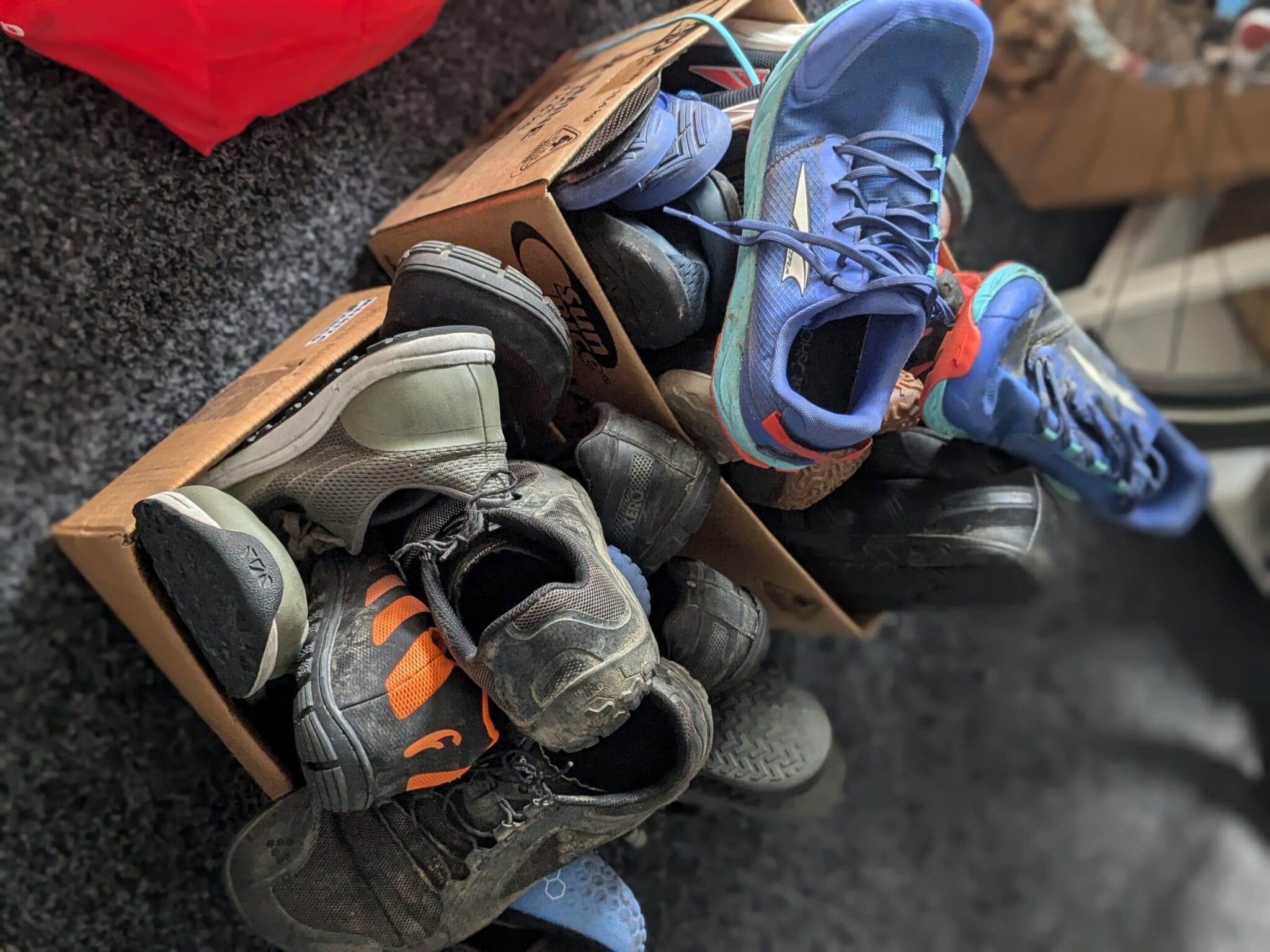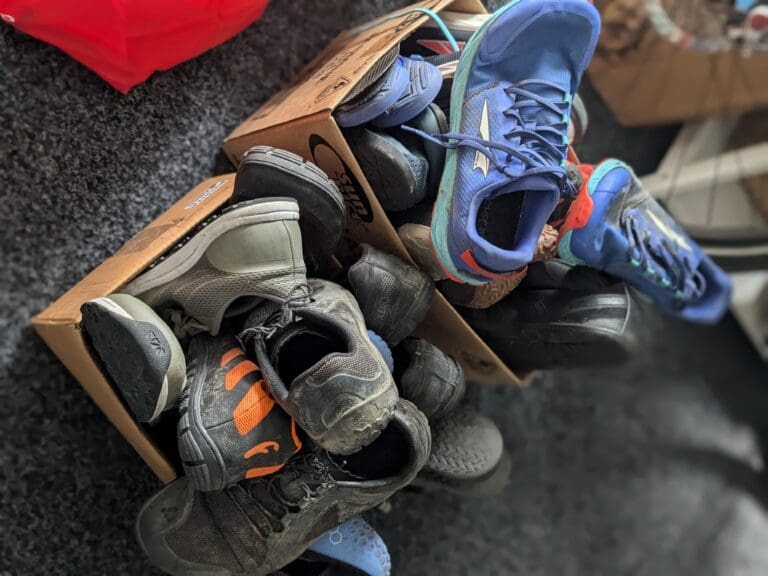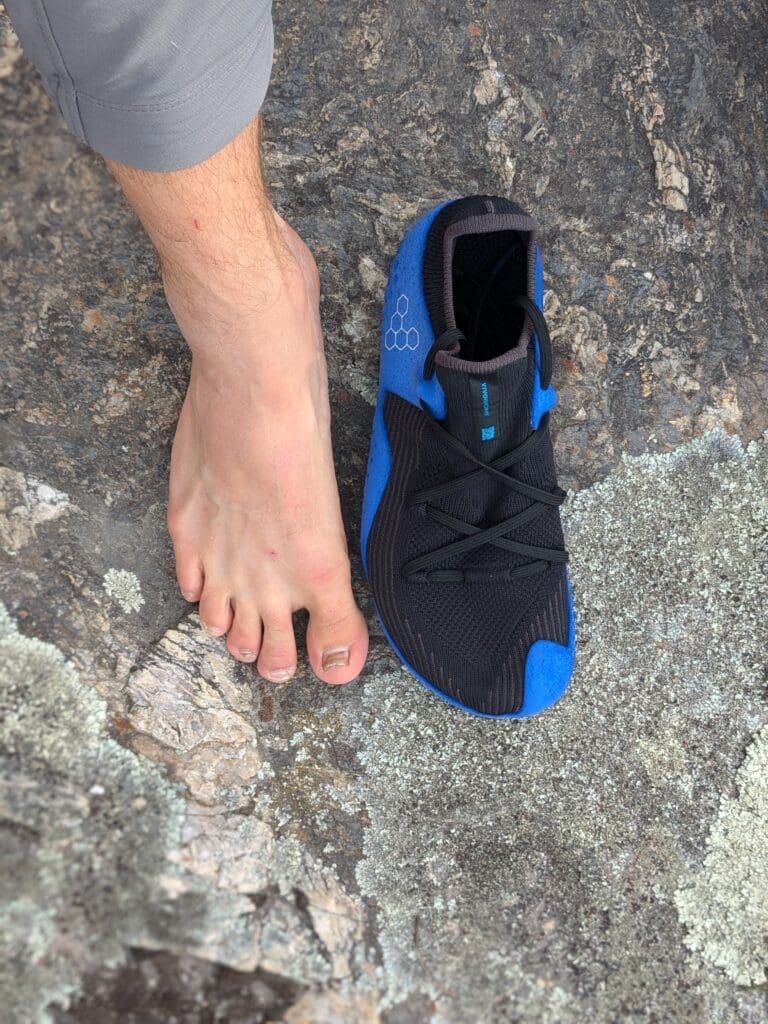I remember when I went all-in on minimal shoes. I was convinced they were the answer to everything my feet needed.
For a while, they were perfect—lightweight, flexible, and letting my feet move naturally.
But then reality hit: I got injured.
It made me question everything I thought I knew about footwear. Over time, I began to see the benefits of cushioned shoes again, even those structured race shoes I once avoided and protective trail shoes for rough terrain.
This journey taught me an important lesson: the right shoes for you now might not be the right shoes forever. And while I’m confident that “foot-shaped” shoes will stay with me forever, some aspects of shoes may vary over time.
Our needs evolve, and our footwear should, too. Let’s explore why your shoe needs to change over time and how you can make the best choices along the way.
Which minimal running shoe is for you?
Take a quick 5-question quiz to identify the perfect minimal running shoe for your feet! You'll get both road and trail options based on your answers!
Feet Evolve
Our feet are constantly changing. With every step we take, they strengthen, reshape, and adapt to the challenges we give them.
Over time, wearing minimal shoes can lead to greater foot strength, well-structured arches, and better toe splay.
The muscles in our feet get stronger, the tendons and ligaments adapt, and our feet can become more resilient.
However, these changes also mean that our footwear needs might shift.
Shoes that once felt perfect might start feeling uncomfortable or insufficient as our feet grow and adapt.
This evolution is natural and a sign that our feet are getting healthier, but it also means we need to be mindful about reassessing our footwear regularly.
Lifestyle and Activity Shifts
Our activity levels and environments are constantly shifting, and this can drastically impact the type of shoes we need.
For example, you might start off primarily road running, where a lightweight, responsive shoe might work best.
But as you get more adventurous, you may find yourself drawn to trail running, which requires more protection, grip, and stability.
Similarly, if you go from working in an office to spending more time on your feet outdoors, your footwear requirements will change.
Different surfaces, weather conditions, and physical demands all play a role in determining which type of shoe will provide the right support and comfort.
It’s important to match your shoes to your current activities and environments, not just stick with what has worked in the past.
Shoe Industry Evolution
The footwear industry is always changing. Brands constantly experiment with new technologies, materials, and designs to improve comfort, performance, and sustainability.
Shoes that were once considered cutting-edge may quickly become outdated as new advancements are made.
For example, the introduction of knit uppers, the extensive breadth of barefoot shoe brands, and the injection of money into the space have changed the landscape in recent years.
This means that the shoes available today might be quite different in the future, offering features that we can’t even predict yet. It’s crucial to stay open to these changes and be willing to try new models as brands evolve their offerings.
Now that we understand our shoe choices are always evolving, it’s time to learn how to assess what we need right now.
Here are three questions to help untangle the confusion in your head and hopefully lead you down the right path to your chosen shoe:
What is the best choice for my foot health NOW?
Take a moment to really think about your foot health right now.
Are your feet feeling strong and ready for something more minimal, or do they still need a bit of extra cushion?
Choosing the right shoes is about honesty with where you are today.
Notice any discomfort, soreness, or signs of fatigue—these are signals your feet are giving you.
Adjust your footwear accordingly to give them exactly what they need to stay healthy and strong.
Remember, it’s not about pushing too hard too soon but about making the best choice for where you are right now.
What will I use the shoes for?
Think about what you’re doing—whether it’s hitting the trails, running on pavement, or spending hours at the gym.
Your shoes need to match those specific activities and training goals.
It’s about finding a pair that supports your current activities so you can perform at your best and stay comfortable.
Where do I see my foot health journey going?
Think about where you want your foot health journey to take you.
Are you looking to spend more time barefoot, strengthen your feet even further, or transition to shoes that are even more minimal?
It’s important to have a vision for where you want to go so you can make choices now that will help you get there.
And there’s no correct answer!
I will 100% encourage foot health all the way, but you should also do what’s right to help you achieve your goals.
This is the hardest part of life! 🙂
Reassessing Over Time
Every few months, it’s worth pausing and asking yourself:
Are these shoes still working for me?
Do they feel comfortable and right for the kind of activities I’m doing now?
If you start noticing discomfort or if they just don’t feel quite right anymore, that’s your sign to make a change.
Our feet constantly adapt, and what worked last year or even last month might not work today.
Be honest with yourself—listen to what your feet tell you and adjust accordingly. It’s all part of the journey to healthier feet.
Accepting Change as Positive
Changing your shoes isn’t a sign of failure—it’s a sign of growth.
Embrace the benefits that come with evolving your shoe choices.
As new technologies emerge and shoe designs adapt, you’ll find options that better suit your needs today.
Maybe that means a more breathable upper for summer running, or a shoe with more structure as you tackle tougher trails.
Staying open to change allows you to take advantage of innovations that can make your runs more comfortable, support your long-term foot health, and ultimately help you enjoy your activities even more.
As we’ve explored, your shoe needs are constantly evolving—just like your feet, your activities, and the shoe industry itself.
The best shoe for you today may not be the best shoe for you next year, and that’s okay. The key is to stay present and honest with yourself about what your body needs now.
Footwear isn’t a one-and-done decision—it’s a journey and one that changes as you grow.
Keep an open mind, stay willing to adapt, and always put your foot health first.
Remember, evolving needs are part of personal growth.
The right shoes are the ones that help you feel strong, comfortable, and ready to tackle whatever comes your way today—and every step of the journey ahead.
Hint… My favorite shoe today is the Xero Shoes Mesa Trail II…. Tomorrow, that may be different. 🙂




Thanks for your insights on this Nick!
This article found me at just the right time. I enjoy running trails and Spartan Races. Have been doing it in Vivos with no problems. Until they gave me blisters.
Then I switched to Merrell Vapor Glove and also increased my training mileage on asphalt. Sadly this resulted in a plantar fasciitis, which has been bugging me for 6 months now.
So now I think, maybe add some cushion once I return to the road? Altra Escalante Racer or maybe even Asics GT 2000 13? And perhaps go back to minimalist shoes only for shorter distances?
I’m still recovering and pondering the options. Not sure what the best approach is but I sure miss running
OH that’s tough.
The first stop will be to get help! Find a physio/podiatrist to define plans to reduce pain and get you moving again.
The next step will be to rebuild your walk -> running slowly and sustainably.
IF Escalante Racers or GT2000 get you moving on the road, that’s perfect, at that point you should start exploring options that build your feet and lower legs to make your self more resilient. Small bouts of barefoot walking, then to running, and then you’re flexible.
A quick tip to help with the “plantar fasciitis” (I’ve had minor issues in the past) is to focus on the rear chain. The calves, the hamstrings up to the glutes. Use a foam roller to loosen your calves and you’ll often feel relief right away. But don’t stop there, contain with rehab and rebuild mobility and strength.
I hope that helps!